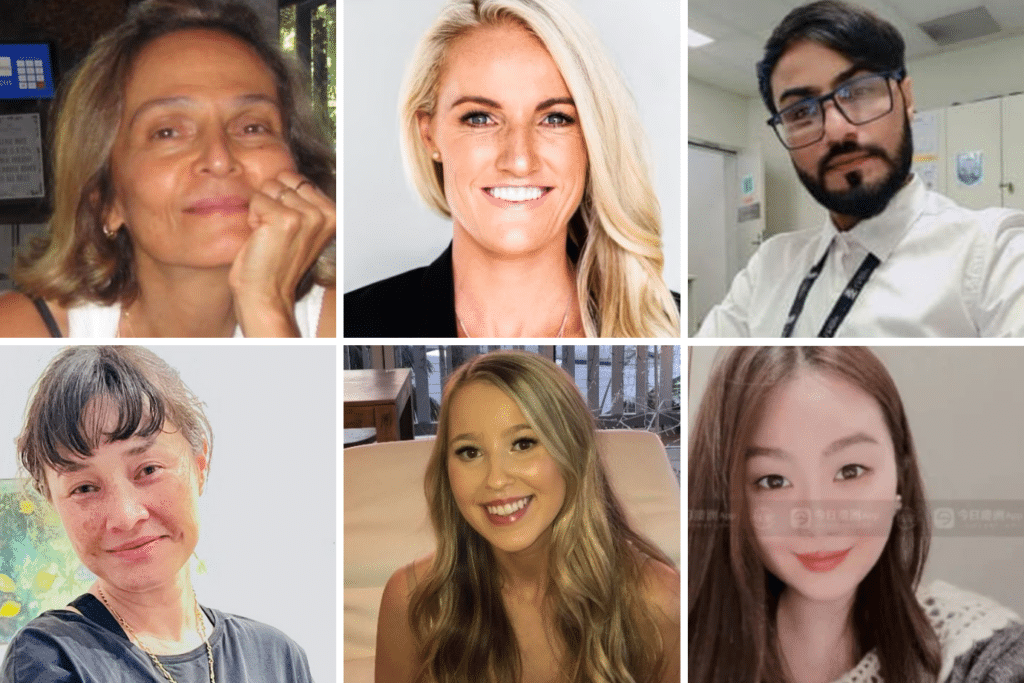People were still sheltering in change rooms and locked shops as the misinformation was spreading online regarding the Bondi Westfield attack.
Islamaphobia and anti-semitism were running rampant, as were racism, conspiracy theories and wild accusations.
Misinformation spread like wildfire across Australia and worldwide—the latter becoming harder to counter as the facts emerged.
People sought to link the attack to their own agenda, within hours of a horrifically injured new mother begging strangers to save her nine-month-old injured daughter.
They shared their take on the attacker, including his nationality and motivations, within hours of a security guard, 30-year-old Faraz Ahmad Tahir, being killed on his first few days on the job after seeking refuge from Pakistan for a safer and better life in Australia just a year ago.
And within hours of four women dying at the scene, including 55-year-old artist Pikria Darchia, 25-year old Dawn Singleton who was just starting her career in eCommerce, 47-year-old mother of two and architect Jade Young, and international student Yixuan Cheng, from China. Ashlee Good, the mother of the baby girl, died in hospital. She was 38.
But for all the claims of the violence being a “jihadi attack”, an “Israeli man with an agenda” or even a “government conspiracy”, the comments from police shared a different story: the attacker did not appear to be driven by any particular ideology.
Rather, as more information has emerged over the last day or so, police suggested something far more common in Australia than ideologically driven terrorist attacks and politically motivated murders: Violence against women.
Asked if the attacker appeared to have singled out women, Police Commissioner Karen Webb told reporters today that would be an “obvious” line of inquiry.
“I think anyone seeing that footage can see that for themselves,” she said when asked about videos circulating online, indicating the attacker had deliberately targeted women and avoided men.
Five women and one man were killed during the attack, with a dozen suffering serious injuries, the majority of them women.
“The videos speak for themselves, don’t they?” she said. “That’s certainly a line of inquiry for us. It’s obvious to me, it’s obvious to detectives that seem to be an area of interest that the offender had focused on women and avoided the men,” Webb said.
Webb also noted the fact five of the six people killed were women and that most of those in the hospital were women.
“We don’t know what was operating in the mind of the offender and that’s why it’s important now that detectives spend so much time interviewing those who know him, were around him and close to him. So we can get some insight into what he might have been thinking. We won’t know necessarily. But we have to take a judgement from those who know him.”
Prime Minister Anthony Albanese said this morning that “the gender breakdown is, of course, concerning” and confirmed on ABC Radio how NSW Police are investigating the issue. He said the full investigation “will be comprehensive, and nothing will not be looked at in this matter.”
This is and will be a difficult event for Australians to comprehend and seek to understand. It’s a high-profile incident we’ll always remember, but one that occurred in a reality where violence against women happens daily. Eighteen women had already been killed by violence this year prior to Saturday’s attack, according to Destroy The Joint.
As Katherine Berney, Executive Director of the National Women’s Safety Alliance, said to me this morning, gender-based violence is a crisis in Australia. She believes this horrific reality was unmasked on a brutally public scale in Bondi, and that the current steps we are taking to provide interventions aren’t working as anticipated.
“We can not and must not be afraid to pivot our ideas and strategies – people’s lives depend on it,” Berney said. “This has to be a turning point for us in sector and policy, we owe it to the victims of this horrific crime and all our communities to facilitate innovative action.”
Perhaps, it’s easier to comprehend the senselessness of the violence and horror that occurred if we can link it to an underlying ideological belief system, however incompatible and unjustifiable such beliefs are with how we live and the values we hold.
Perhaps, it’s easier to believe that “these things don’t happen around here” or even that ” these things don’t happen in Australia,” as one local told the New York Times.
Perhaps, it’s reassuring to believe the attack was so shocking due to some kind of moral superiority Australians feel as a result of this country’s gun laws, that make the large-scale massacres witnessed in America thankfully so much rarer here.
But violence happens in Australia. It happens in shopping centres. It happens on the street. It happens in homes. No suburb, beach or shopping centre is immune. Violence doesn’t require a gun, an ideology or any particular political motivation.
The life of the 40-year-old attacker, Joel Cauchi, is being scrutinised. We now know he arrived in Sydney from Queensland just a month ago and has suffered from mental illness since being a teenager. He had no known fixed address in Sydney. He had no regular contact with family, and appeared to be somewhat of a drifter. He has never been arrested and has no history of violence.
Whatever further answers are uncovered, there is no ‘why’ that can provide enough sollace for those affected. But perhaps there are some answers that could at least do something to help in preventing anything like it from ever happening again.
If you’re struggling, know that help is available 24/7. Call 000 in an emergency.
Lifeline: Call 13 11 14, text 0477 13 11 14. Beyond Blue: Call 1300 22 4636.
1800RESPECT: Call 1800 737 732, text 0458 737 732.
MensLine Australia: Call 1300 78 99 78.


